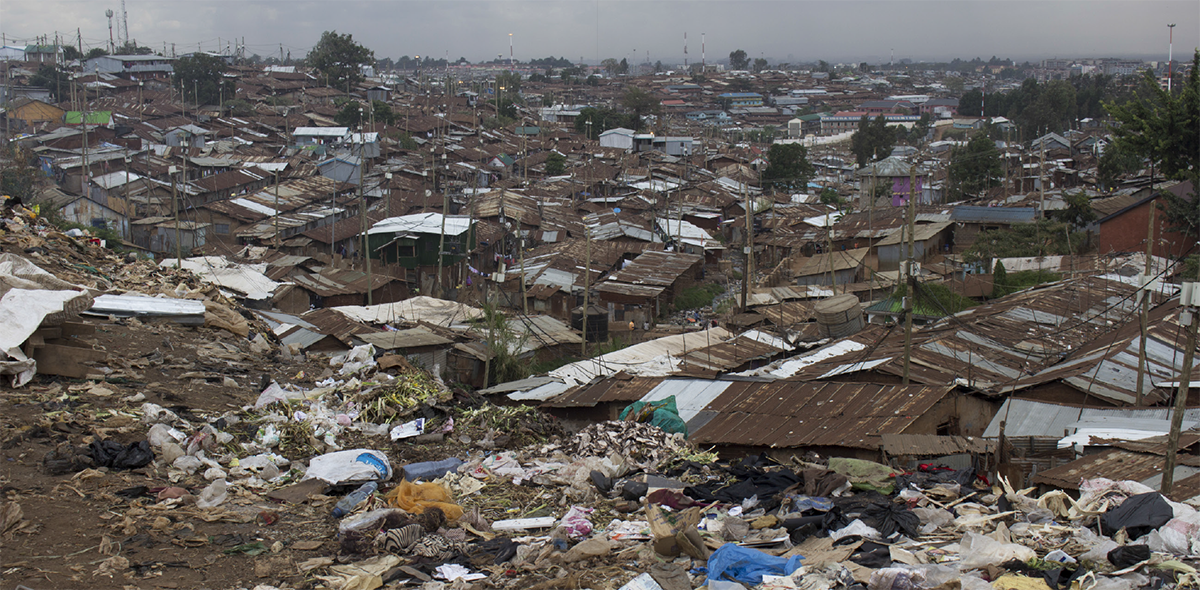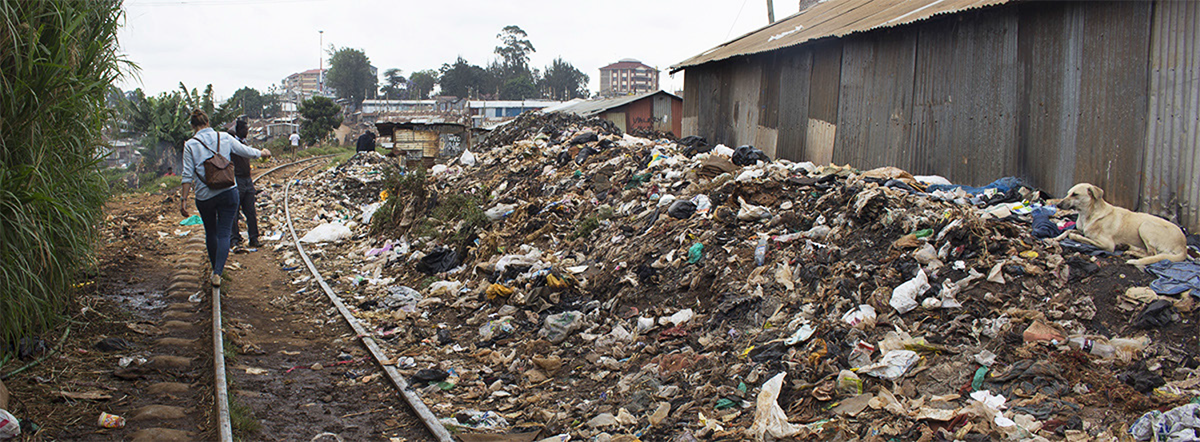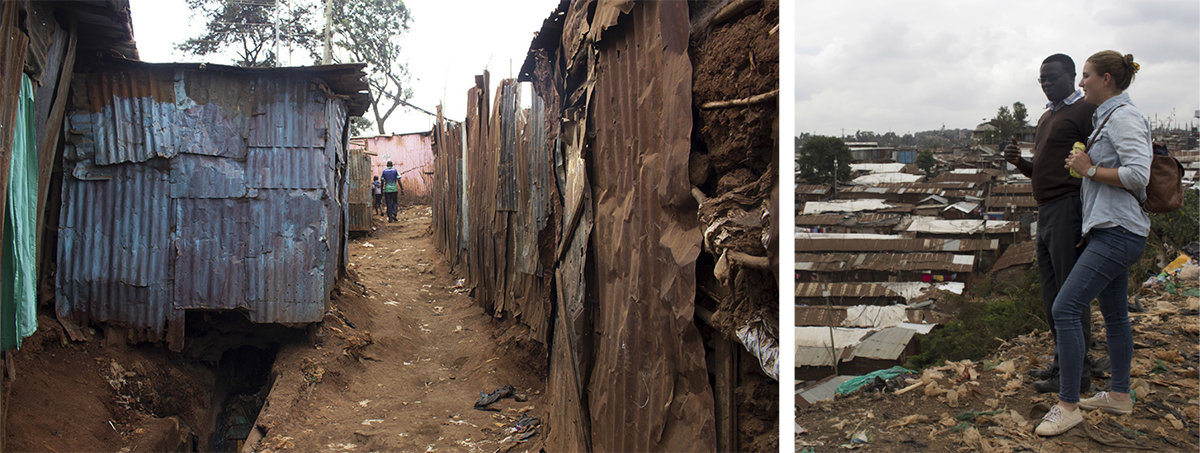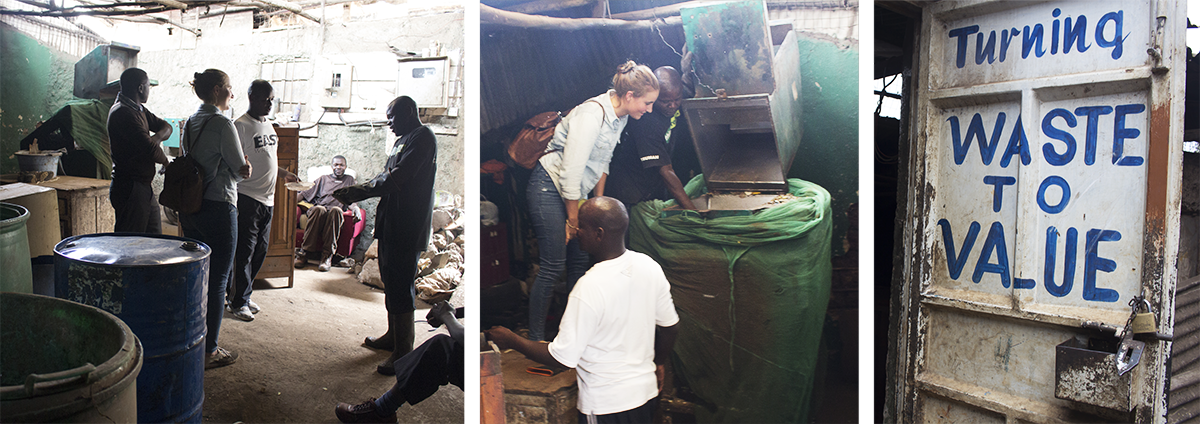Kibera
The biggest urban slum in Africa

Some of Nairobi’s residents already process their own trash, especially if they have gardens and are able to burn the combustibles, or take glass and plastics for recycling.
But Kibera has its own challenges.
Nairobi’s biggest slum, Kibera has an estimated 200,000 to 500,00 residents, although some websites put that figure much higher. They live in densely-built shacks with mostly narrow paths and alleys between them: there are only a few main access roads. Most residents don’t have plumbing or toilets in their homes, so pollution from human waste is a problem here too. Though through Athi water services, sewer trunks and laterals are being built courtesy of the National youth program.

I was very glad that my Dandora contact, Uncle, came to meet me in Kibera in order to introduce me to one of Kibera‘s Youth Leaders: Steve. Again, it was one of the rare rainy days. „It must be fortune“, Uncle said „God wants us to meet more often.“
Walking through the narrow paths, Steve told me about the situation and how it has changed - or not changed. Although the National Youth Service has been active in waste management here, there is still a visual impression of trash being ever-present: the settlement is too dense to send trash-collecting trucks in everywhere, and 500,000 people produce a lot of litter every day!

But local solutions are growing.
The Umande Trust is a local charity organisation supporting urban communities to get access to sanitation and clean water. Their bio center initiative (BCI) enables self-help groups to build sanitary blocks that use a bio digester to transform human waste into biogas, which can then be used for cooking and other purposes.

The Taka ni Pato program is also making small but steady gains. Set up by Carolina for Kibera, the income-generating, solid waste management and recycling project claims to remove more than 2000 tons of trash each year. They have installed a shredder to enable people to sell the shredded material, which is worth much more than unshredded plastic. It is in use, but they often have power issues and maintenance is difficult due to a lack of the right tools.

Again, more requirements for the shredder: power independency and easy to maintain!
In the end, Steve mentioned another very promising project: The company ASTICOM is planning to build a big recycling plant in Kibera. He suggested I speak to his contact there, Dr. Leah Tsuma.
-
<< Previous - Next >>